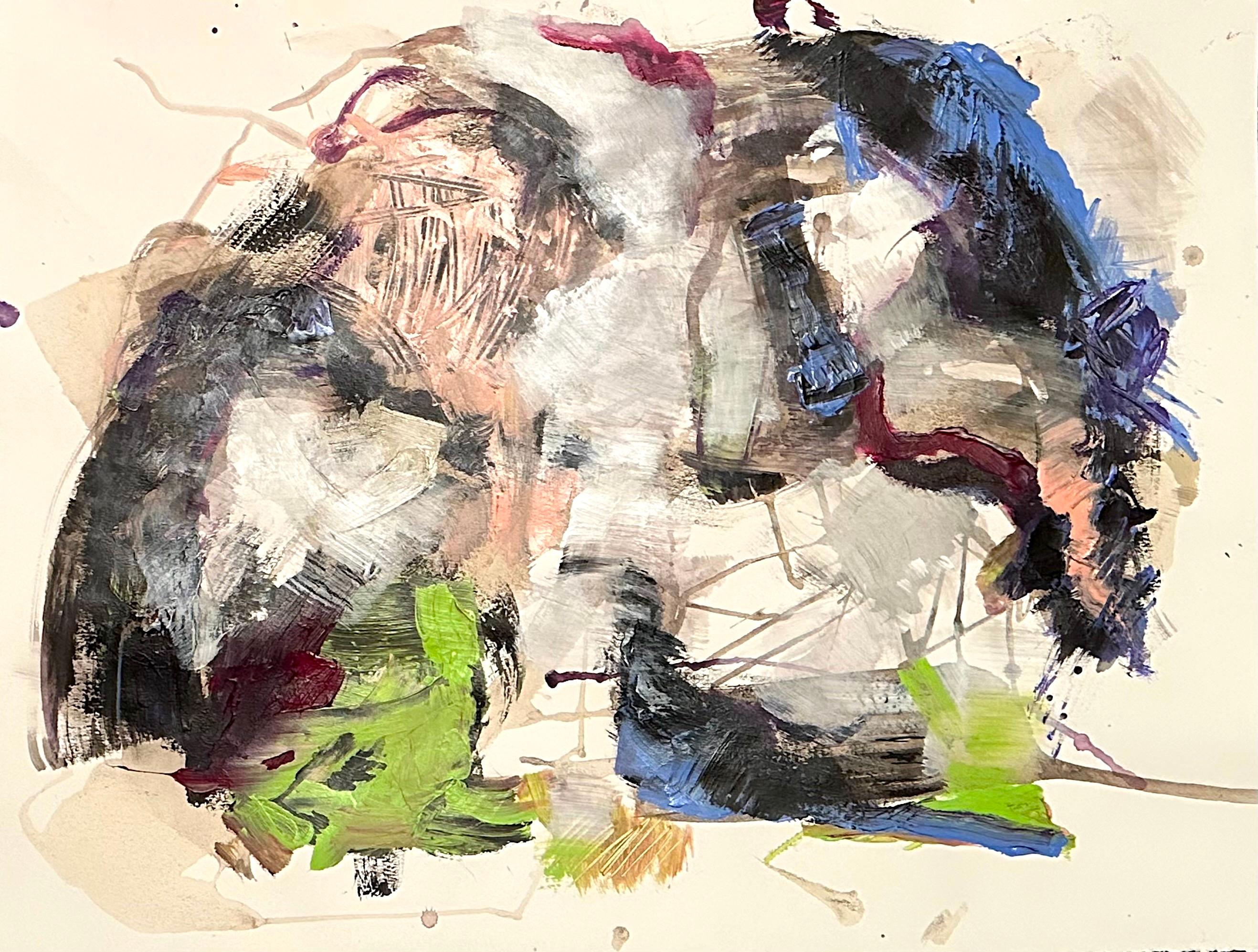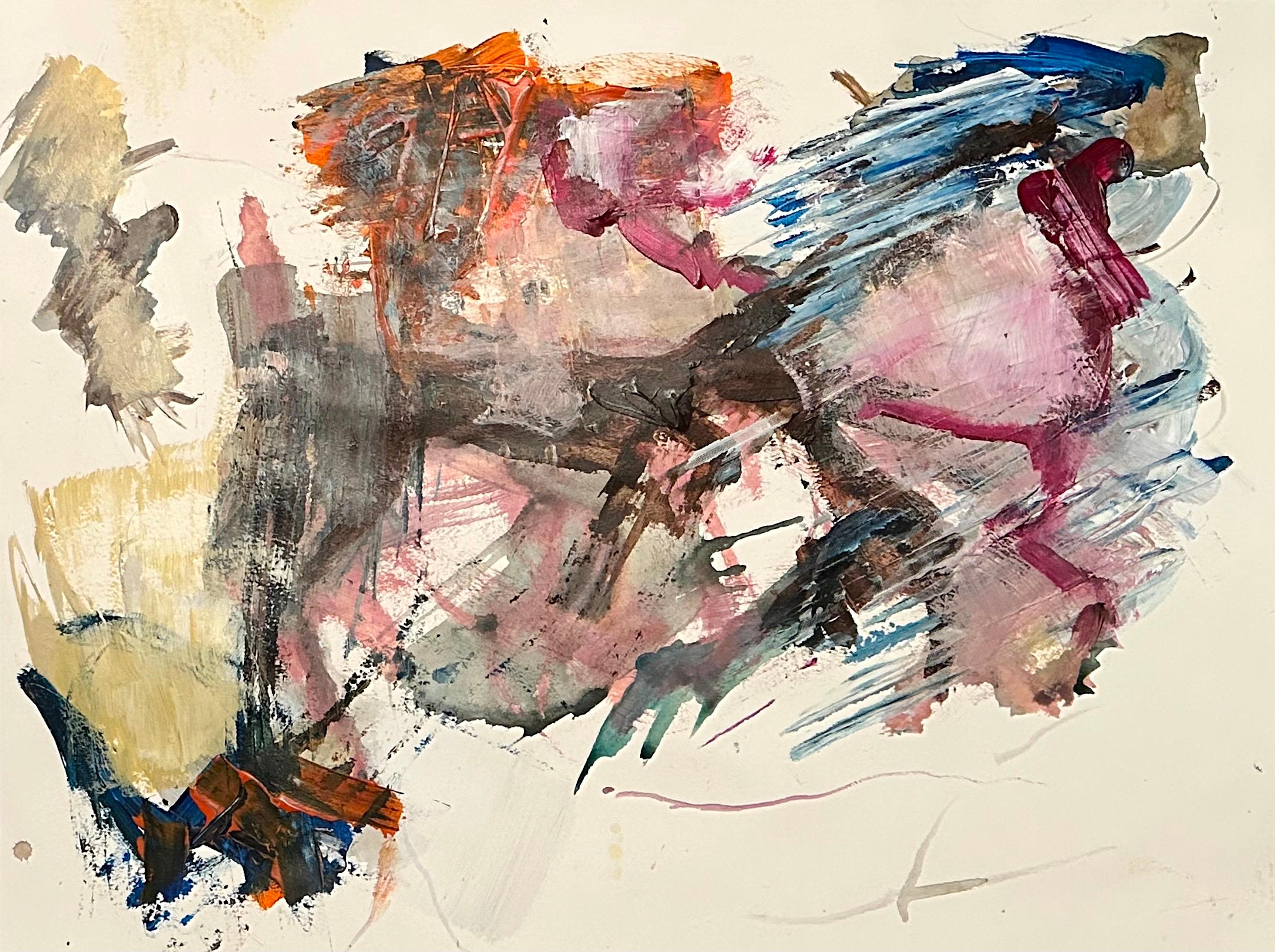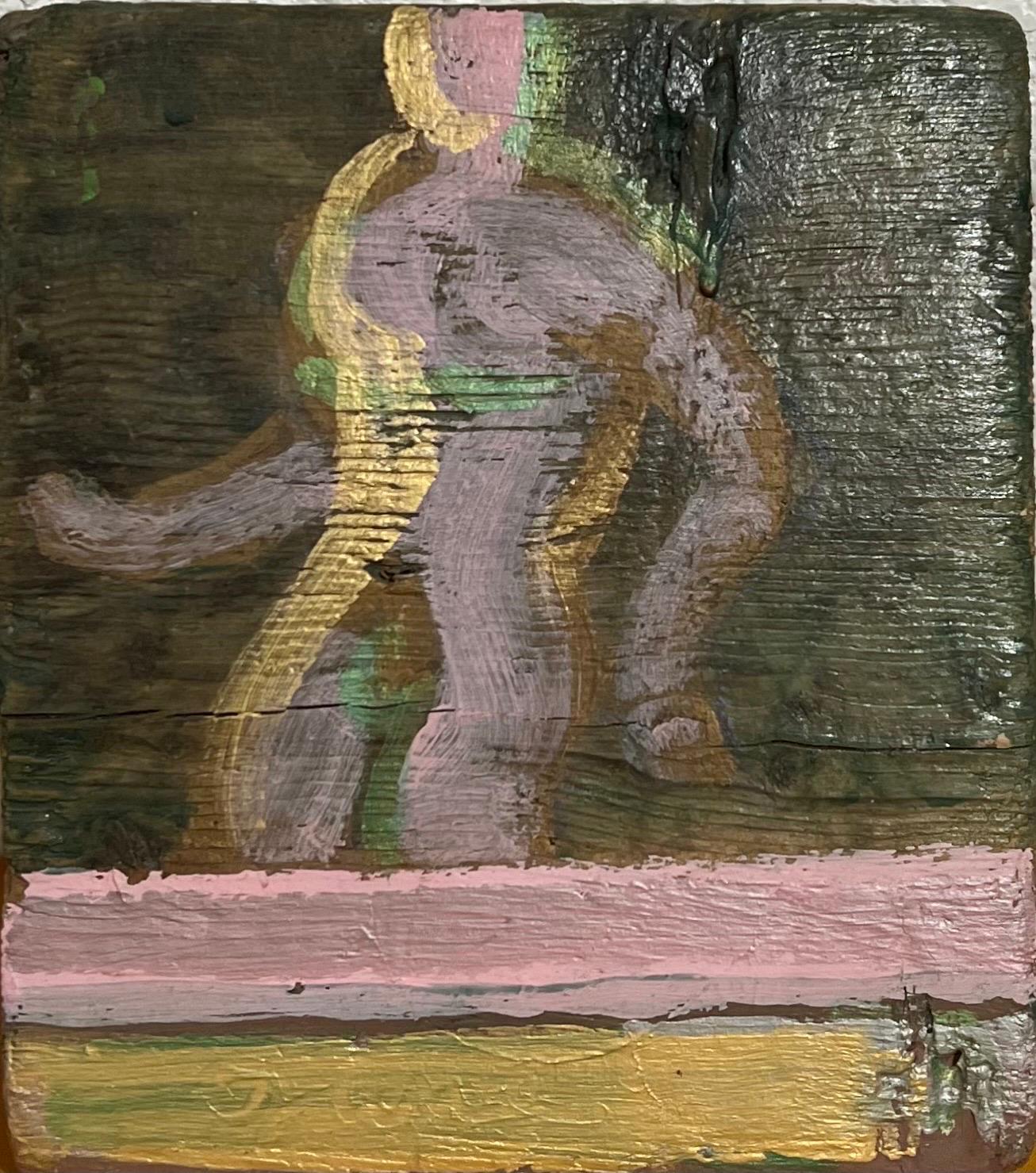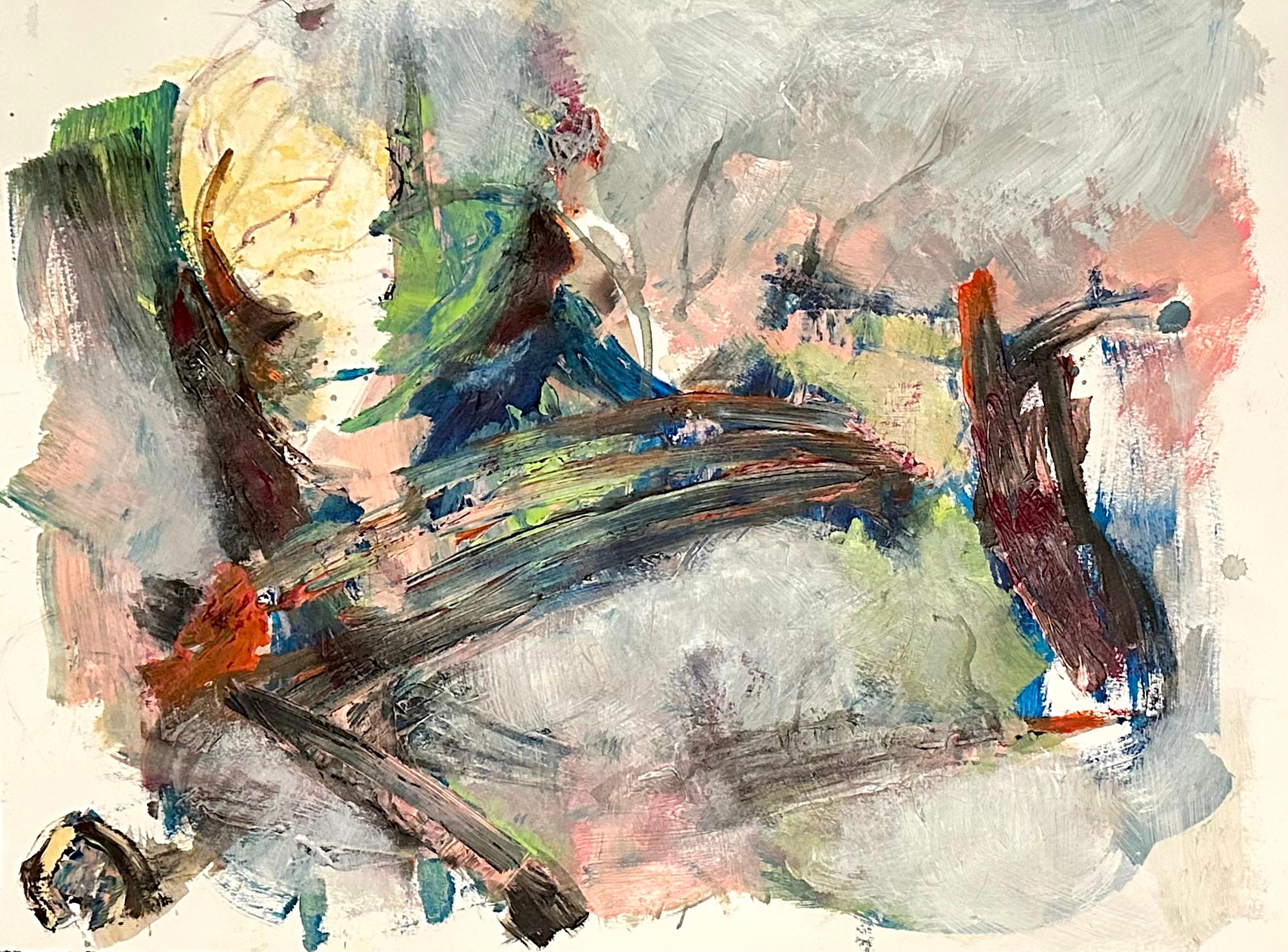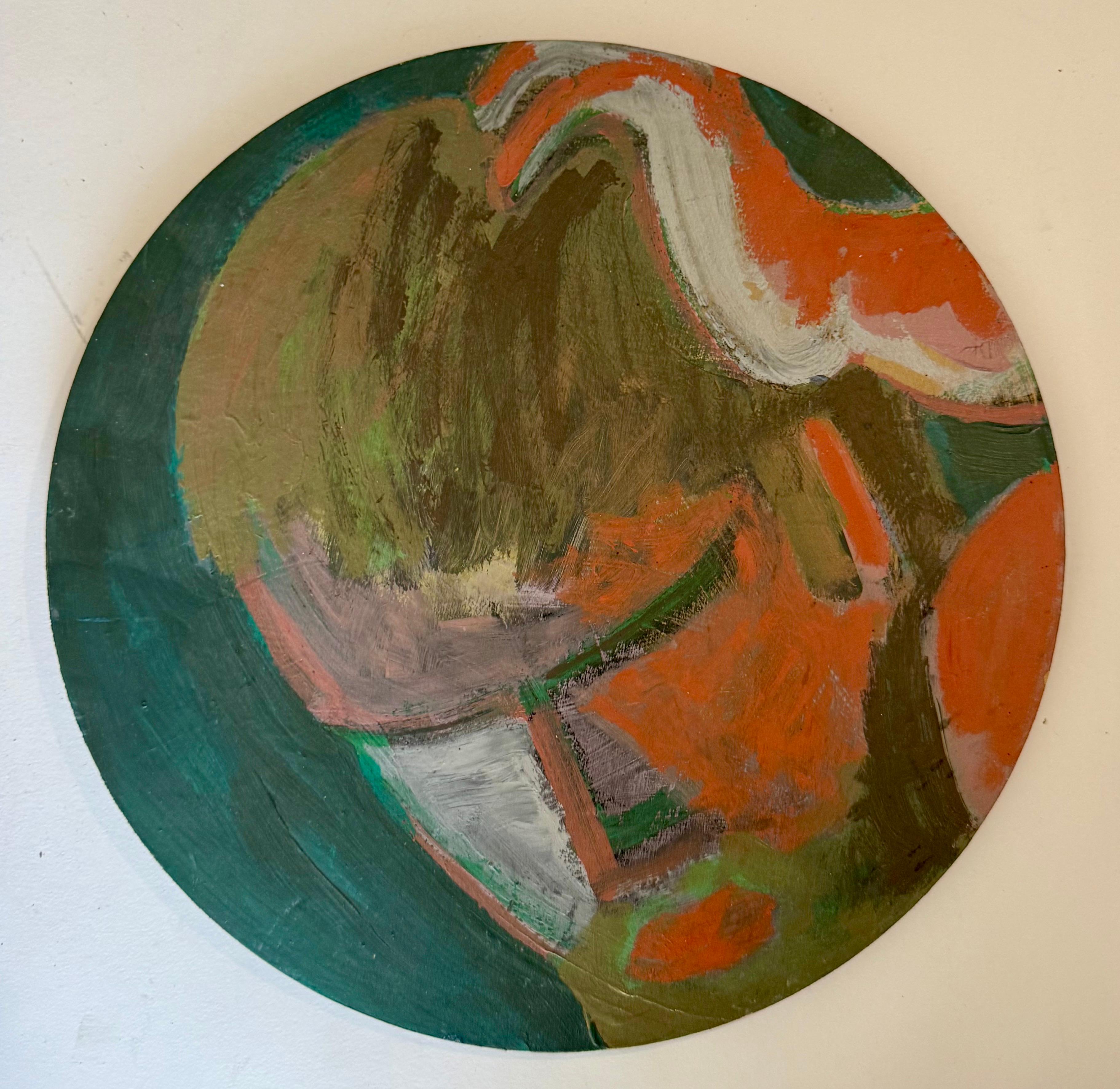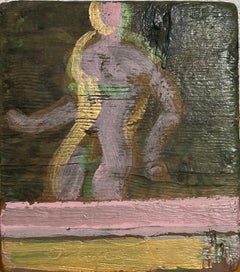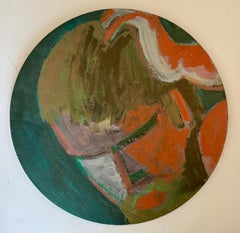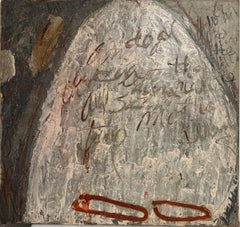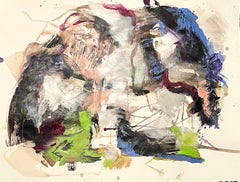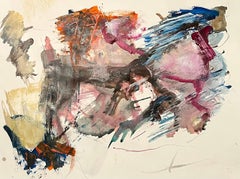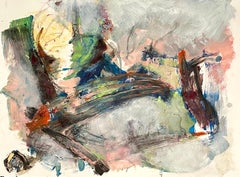Items Similar to Mod Abstract Expressionist Modernist Oil Painting Dog Drawing Edward Avedisian
Want more images or videos?
Request additional images or videos from the seller
1 of 7
Edward AvedisianMod Abstract Expressionist Modernist Oil Painting Dog Drawing Edward Avedisianc.1960's
c.1960's
$650
£495.97
€564.20
CA$912.81
A$998.96
CHF 527.86
MX$11,923.26
NOK 6,736.19
SEK 6,160.80
DKK 4,214.28
About the Item
Edward Avedisian ( 1936-2007 )
7.5 X 5.75
Oil paint on wood panel
This is not signed on front. It bears his name verso.
Provenance: Hudson, N.Y. estate of noted Art Collector Albert Burnette Roberts (1932-2021)
Edward Avedisian (June 15, 1936, Lowell, Massachusetts – August 17, 2007, Philmont, New York) was an American abstract painter who came into prominence during the 1960s. His work was initially associated with Color field painting and in the late 1960s with Lyrical Abstraction and Abstract Expressionism. This work is reminiscent of later work by Hunt Slonem.
He studied art at the School of the Museum of Fine Arts, Boston. By the late 1950s he moved to New York City. Between 1958 and 1963 Avedisian had six solo shows in New York. In 1958 he initially showed at the Hansa Gallery, then he had three shows at the Tibor de Nagy Gallery and in 1962 and 1963 at the Robert Elkon Gallery. He continued to show at the Robert Elkon Gallery almost every year until 1975.
During the 1960s his work was broadly visible in the contemporary art world. He joined the dynamic art scene in Greenwich Village, frequenting the Cedar Tavern on Tenth Street, associating with the critic Clement Greenberg, and joining a new generation of abstract artists, such as Darby Bannard, Kenneth Noland, Jules Olitski, and Larry Poons.
Avedisian was among the leading figures to emerge in the New York art world during the 1960s. An artist who mixed the hot colors of Pop Art with the cool, more analytical qualities of Color Field painting, he was instrumental in the exploration of new abstract methods to examine the primacy of optical experience.
One of his paintings was appeared on the cover of Artforum, in 1969, his work was included in the 1965 Op Art The Responsive Eye exhibition at the Museum of Modern Art and in four annuals at the Whitney Museum of American Art. His paintings were widely sought after by collectors and acquired by major museums in New York and elsewhere. He has been exhibited in prominent galleries, such as the Anita Shapolsky Gallery and the Berry Campbell Gallery in New York City. Edward Avedisian was known for his brightly colored, boldly composed canvases that combined Minimalism's rigor, Pop art exuberance and the saturated tones of Color Field painting.
Roberta Smith of the NYT writes of Avedesian: "Edward Avedisian helped establish the hotly colored, but emotionally cool, abstract painting that succeeded Abstract Expressionism in the early 1960s. This young luminary harnessed elements of minimalism, pop, and color field painting to create prominent works of epic proportions that energized the New York art scene of the time." In 1996 Avedisian showed his paintings from the 1960s at the Mitchell Algus Gallery, then in SoHo. His last show, dominated by recent landscapes, was in 2003 at the Algus gallery, now in Chelsea.
Selected Exhibitions:
Op Art: The Responsive Eye, at the Museum of Modern Art,
Whitney Museum’s Young America 1965
Expo 67, held in Montreal, Canada.
Six Painters (along with Darby Bannard, Dan Christensen, Ron Davis, Poons, and Peter Young) , Albright-Knox Art Gallery in collaboration with the Baltimore Museum of Art and the Milwaukee Art Center.
Selected collections:
Albright-Knox Art Gallery, Buffalo, New York;
Brooklyn Museum, New York;
Denver Art Museum, Colorado;
Flint Institute of Arts, Michigan;
Metropolitan Museum of Art, New York;
Neuberger Museum of Art, Purchase, New York;
Parrish Art Museum, Southampton, New York;
Portland Art Museum, Oregon;
Smithsonian American Art Museum, Washington, D.C.;
Solomon R. Guggenheim Museum, New York;
University of Michigan Museum of Art, Ann Arbor;
Yale University Art Gallery, New Haven, Connecticut.
Museum of Modern Art,
Whitney Museum of American Art,
Berkshire Museum, Pittsfield, Massachusetts,
Wadsworth Atheneum, Hartford, Connecticut,
Los Angeles County Museum of Art, LACMA,
- Creator:Edward Avedisian (1936-2007, American)
- Creation Year:c.1960's
- Dimensions:Height: 7.5 in (19.05 cm)Width: 5.75 in (14.61 cm)
- Medium:
- Movement & Style:
- Period:
- Condition:good. please see photos.
- Gallery Location:Surfside, FL
- Reference Number:1stDibs: LU38212408412
About the Seller
4.9
Platinum Seller
Premium sellers with a 4.7+ rating and 24-hour response times
Established in 1995
1stDibs seller since 2014
1,846 sales on 1stDibs
Typical response time: 1 hour
- ShippingRetrieving quote...Shipping from: Surfside, FL
- Return Policy
More From This Seller
View AllMod Abstract Expressionist Modernist Oil Painting Edward Avedisian Color Figure
By Edward Avedisian
Located in Surfside, FL
Edward Avedisian ( 1936-2007 )
8 X 9
Oil paint on wood plank panel with gold and purple figure
This is not signed on front. It bears his name verso.
Provenance: Hudson, N.Y. estate of noted Art Collector Albert Burnette Roberts (1932-2021)
Edward Avedisian (June 15, 1936, Lowell, Massachusetts – August 17, 2007, Philmont, New York) was an American abstract painter who came into prominence during the 1960s. His work was initially associated with Color field painting and in the late 1960s with Lyrical Abstraction and Abstract Expressionism.
He studied art at the School of the Museum of Fine Arts, Boston. By the late 1950s he moved to New York City. Between 1958 and 1963 Avedisian had six solo shows in New York. In 1958 he initially showed at the Hansa Gallery, then he had three shows at the Tibor de Nagy Gallery and in 1962 and 1963 at the Robert Elkon Gallery. He continued to show at the Robert Elkon Gallery almost every year until 1975.
During the 1960s his work was broadly visible in the contemporary art world. He joined the dynamic art scene in Greenwich Village, frequenting the Cedar Tavern on Tenth Street, associating with the critic Clement Greenberg, and joining a new generation of abstract artists, such as Darby Bannard, Kenneth Noland, Jules Olitski, and Larry Poons.
Avedisian was among the leading figures to emerge in the New York art world during the 1960s. An artist who mixed the hot colors of Pop Art with the cool, more analytical qualities of Color Field painting, he was instrumental in the exploration of new abstract methods to examine the primacy of optical experience.
One of his paintings was appeared on the cover of Artforum, in 1969, his work was included in the 1965 Op Art The Responsive Eye exhibition at the Museum of Modern Art and in four annuals at the Whitney Museum of American Art. His paintings were widely sought after by collectors and acquired by major museums in New York and elsewhere. He has been exhibited in prominent galleries, such as the Anita Shapolsky Gallery and the Berry Campbell...
Category
1960s Abstract Expressionist Landscape Paintings
Materials
Oil, Wood Panel
Mod Abstract Expressionist Modernist Edward Avedisian Color Field Oil Painting
By Edward Avedisian
Located in Surfside, FL
Edward Avedisian
Unsigned, (bears name signed verso in pencil.)
Dimensions: 15" X 15" (round tondo)
Circa late 1970s
This is a mod, brutalist portrait of a man
Edward Avedisian (J...
Category
1970s Abstract Expressionist Abstract Paintings
Materials
Oil, Board
Mod Abstract Expressionist Modernist Oil Painting Edward Avedisian Color Circles
By Edward Avedisian
Located in Surfside, FL
Edward Avedisian ( 1936-2007 )
12 X 8.5
Oil paint on wood panel
This is not signed on front. It bears his name verso.
Provenance: Hudson, N.Y. estate of noted Art Collector Albert B...
Category
1960s Abstract Expressionist Landscape Paintings
Materials
Oil, Wood Panel
Untitled Composition Abstract Expressionist Oil Painting Jay Milder
By Jay Milder
Located in Surfside, FL
Jay Milder (American, 1934-)
Oil painting on Canvas
Hand signed lower right
Dated 1960
This is being sold unframed
Abstract with letters and calligraphy, Homage to Cy Twombly.
Jay ...
Category
1960s Abstract Expressionist Abstract Paintings
Materials
Canvas, Oil
Mod Abstract Expressionist Modernist Oil Painting Edward Avedisian Color Forms
By Edward Avedisian
Located in Surfside, FL
Edward Avedisian ( 1936-2007 )
15 X 8.5
Oil paint on wood panel
This is not signed on front. It bears his name verso.
Provenance: Hudson, N.Y. estate of noted Art Collector Albert B...
Category
1960s Abstract Expressionist Landscape Paintings
Materials
Oil, Wood Panel
Mod Abstract Expressionist Modernist Edward Avedisian Color Field Art Gouache
By Edward Avedisian
Located in Surfside, FL
Edward Avedisian Gouache Watercolor Abstract Painting on Arches paper. (notebook cover not included)
Unsigned, (bears name verso in pencil.)
Dimensions: 10" X 14"
Late 1970s, early 1...
Category
1970s Abstract Expressionist Abstract Paintings
Materials
Watercolor, Gouache
You May Also Like
Dog Abstract Contemporary Art Avant- Garde Original Oil Painting
Located in Granada Hills, CA
Abstract Painting Avant- Garde Original Painting Ready to Hang
Artist: Karen Dolukhanyan
Title: Dog
Medium: Oil on Canvas
Year: 2020
Style: Abstract Art, Avant-Garde
Dimensions: 36" ...
Category
2010s Impressionist Abstract Paintings
Materials
Canvas, Oil
Lost Pets II : Abstract artwork on paper
By Iliyan Ivanov
Located in New York, NY
Abstract artwork on paper by a Bulgarian/American artist Iliyan Ivanov.
Ivanov continues to treat color in a multilayered approach, introducing a wider palette with brighter and bol...
Category
2010s Abstract Expressionist Abstract Paintings
Materials
Paper, Acrylic
Lost Pets X : Abstract artwork on paper
By Iliyan Ivanov
Located in New York, NY
Abstract artwork on paper by a Bulgarian/American artist Iliyan Ivanov.
Ivanov continues to treat color in a multilayered approach, introducing a wider palette with brighter and bol...
Category
2010s Abstract Expressionist Abstract Paintings
Materials
Paper, Acrylic
Lost Pets IV : Abstract artwork on paper
By Iliyan Ivanov
Located in New York, NY
Abstract artwork on paper by a Bulgarian/American artist Iliyan Ivanov.
Ivanov continues to treat color in a multilayered approach, introducing a wider palette with brighter and bol...
Category
2010s Abstract Expressionist Abstract Paintings
Materials
Paper, Acrylic
Lost Pets XII : Abstract artwork on paper
By Iliyan Ivanov
Located in New York, NY
Abstract artwork on paper by a Bulgarian/American artist Iliyan Ivanov.
Ivanov continues to treat color in a multilayered approach, introducing a wid...
Category
2010s Abstract Expressionist Abstract Paintings
Materials
Paper, Acrylic
Absrtact Graffiti Style Canvas Painting
By Renelio Marin
Located in New York, NY
Renelio Marin is a visual artist with a diverse range of influences and styles. Born in Cuba, he received his graduate degree from the San Alejandro School of Fine Arts in Havana in ...
Category
2010s Abstract Expressionist Abstract Paintings
Materials
Oil
More Ways To Browse
Berkshire Art
Tibor Nagy
Abstract Dog Painting
Expo 67
Blue Dog Painting
Ron Davis
Paintings Of Tropical
Hunting Horse
Paintings Of Cats
Painting Of Fish
Abraham Lincoln Art
Horse France Painting
19th Century Dog Painting
Antique Hunting Paintings
19th Century Horse Oil
Hunting Oil Painting
Maine Sculpture
Black Cat Painting
